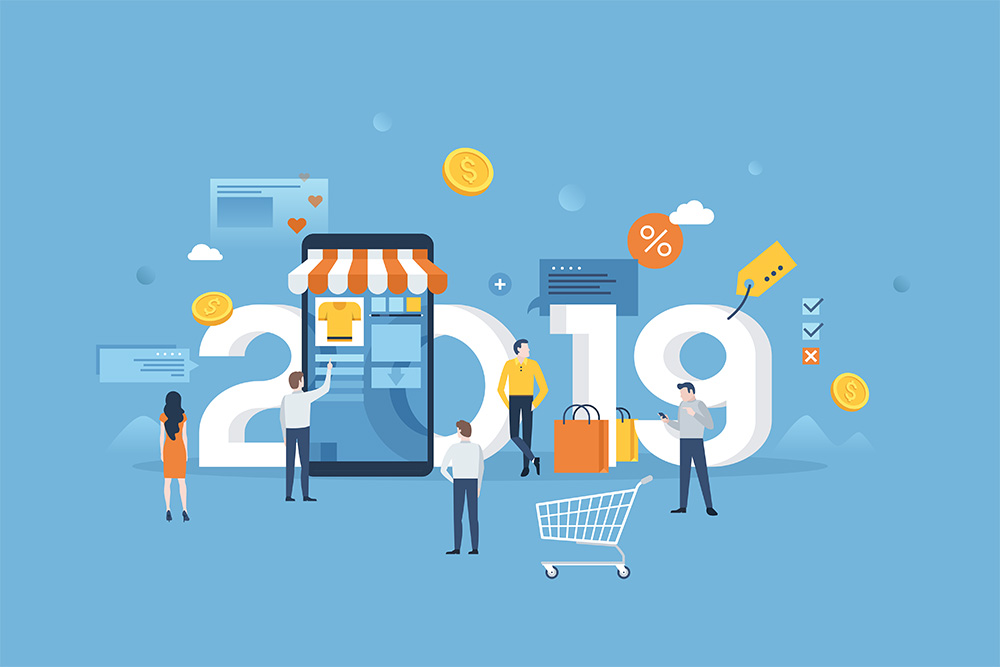Retail to get personal in 2019

As retailers flip the sign to ”open” and roll back the shutters for another trading year ahead, 2019 is shaping up to see the technology that dominated 2018 make further inroads into the retail experience.
This year retailing looks primed to become more personal and more immersive as more shoppers take their search online. For bricks and mortar, that means the push will continue to offer a “retail experience” while the online search that drives consumers to their store will be more tailored than ever before.
Here’s an insight into the top trends experts tip will dominate the retail landscape throughout 2019.
It’s personal
Using data that ranges from a customer’s search and purchasing history to information about their location and demographics, the retail experience is about to get a whole lot more personal.
Ragtrader recently noted 55 per cent of consumers now expect to receive personalised offers within 24 hours of making themselves known to a brand. Meanwhile, 70 per cent express frustration at impersonal shopping experiences.
That higher expectation is set to see the focus shift from “customer experience” to “intimate experience” where consumers will feel entitled to access deals and offers that are highly specific to them.
“Retailers need to understand their ability to access deep data to make the leap from CX to IX. Ask yourself, how close do we feel to our customers? Do we intuitively know what they want and how to help them?” Rag Trader notes.
Online rise continues
This year online shopping is tipped to increase further, with Inside Retail noting: “Retailers should expect to see a 30 per cent growth in online sales over the coming year, with 70 per cent of those sales transacted on smartphones”.
For the bricks and mortar sector that means an omni-channel presence is a must, allowing them to catch both the online shopper and the ardent real-world fan seeking a retail experience.
Service and experience over products
The customer experience has been a major theme in recent years, with bricks and mortar at the frontline of the experiential push.
That trend is likely to accelerate throughout 2019, with real-world retailers rethinking their store offerings, layout, service levels and technology to incorporate the shift.
Among those leading the charge is Australia’s longest continuously trading retailer – David Jones.
At present, they’re in the throes of renovating and redesigning their flagship Elizabeth Street store in Sydney to the tune of $200 million.
David Jones head of store design Nic Criticos, recently told Future Stores the retailer was “working to develop not just a new look for our future, but an entirely new way of thinking in terms of how our stores are perceived by our customers”.
The transformation will feature a decluttered layout where consumers can easily test and try wares and purchase them immediately, along with “experiences” and destinations like a Champagne Bar, cafes, homewares destination and Children’s World.
“The biggest component of our transformation is the renewed focus on experience and service. You can’t get a haircut online, you can’t have a coffee online, you can’t try something on online or speak to someone face to face, which is why we’re integrating a champagne bar, a hair salon, a whiskey bar and a children’s world,” he explained.
“We want to engage with our customers. We want to make their lives easier, more comfortable, more enriching in a way that an online experience never could.”
Augmented reality
Last year saw augmented reality continue to make inroads into the retail purchasing journey. Major brands like Ikea rolled out apps that allowed consumers to visualise products within their own personal space, while apparel retailer Lacoste was among other brands using AR to great effect.
The trend will increase in the coming months as more and more retailers harness the power of AR.
Shopify explains AR places the customer experience literally in the consumer’s hands.
“… 61 per cent of consumers prefer stores that offer AR experiences – and 40 per cent of them would pay more for your product if they have the chance to experience it through AR,” they note.
Chatbots
Meanwhile, the way consumers initially engage with a brand is changing as chatbots find their place in the service realm.
Handling regular, mundane requests like “when are you open?”, chatbots allow a prospective buyer to gain information any time of day or night. They help guide consumers through the purchasing process while also freeing up actual customer service consultants to better cater to their consumer.
“53 per cent of consumers prefer to shop with brands they can directly message on Facebook, so it is important for retailers to set up messenger bots that can cope with welcome conversations and other basic customer interactions (product discovery etc.),” Rag Trader notes.
Voice-activated shopping
Last year smart speakers took the Australian market by storm with Amazon Echo and Apple HomePod joining Google Home in the local market.
That prompted a lot of talk about voice-activated shopping. The volume on that debate is only set to increase over the year ahead. Now consumers can generate their grocery list by voice, order a pizza or search for the latest retail offerings in shoes of their size.